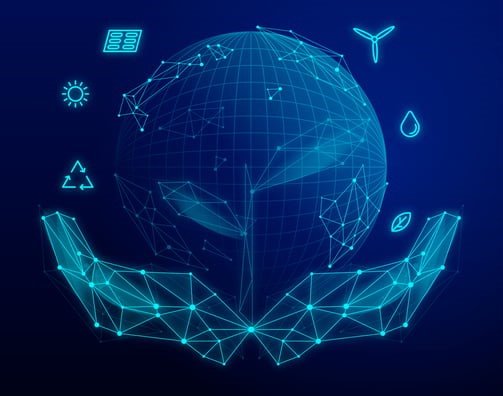The Environmental Impact of Chatbots: A Sustainable Approach to AI
Sustainable world is our main dream for future, where are chatbots here in the future sustainability plans of businesses?
September 29, 2023
Gizem Argunşah

Chatbots and the Environment: Balancing Innovation and Sustainability
Chatbots have become an integral part of our digital lives. They provide instant customer service, streamline operations, and even offer a touch of companionship. But amidst the undeniable convenience they offer, there’s a growing concern about the environmental costs associated with this technology. Let’s delve deeper into understanding the environmental impact of chatbots and explore ways to make them more sustainable.
The Energy Consumption of Chatbots
The foundation of chatbot functionality lies in the vast data centers and powerful servers that support them. These facilities require enormous amounts of energy for processing, storage, and cooling. The energy source for this infrastructure is often a mix of renewables and fossil fuels, leaving a sizable carbon footprint. Research indicates that the training and operation of large language models, the backbone of sophisticated chatbots, can produce emissions equivalent to the lifetime output of five cars. [1]
Sustainable Solutions for Chatbots
Mitigating the environmental impact of chatbots necessitates a conscious, multi-pronged strategy. Let’s explore some approaches:
1. Data Center Optimization
A key step is to choose hosting providers committed to renewable energy. Tech giants like Google, Microsoft, and Amazon are increasingly investing in wind and solar power for their data centers. By opting for ‘green’ hosting, businesses can significantly reduce the carbon footprint associated with their chatbots.
2. Energy Efficiency
Progress in artificial intelligence research is giving rise to energy-efficient algorithms and hardware. This translates to chatbots and AI systems designed to consume less power without compromising performance. Companies like Microsoft have dedicated initiatives like “AI for Earth,” supporting projects that leverage AI to address environmental challenges. [2]
3. Green Chatbots
A new wave of chatbots promotes environmental sustainability. These ‘green’ chatbots educate users about reducing waste, conserving resources, and adopting eco-conscious habits. They can encourage sustainable practices and help individuals track their environmental impact.
4. Reduced Redundancy
By optimizing chatbot scripts and algorithms, developers can reduce redundant responses and minimize server load, leading to energy savings. Greenpeace’s Click Clean Report evaluates the energy use by major tech companies and their commitment to renewable energy, shedding light on which companies are taking steps towards sustainability [3].
The Future of Sustainable Chatbots
The development of environmentally responsible chatbots is both an ethical imperative and a strategically sound business decision. Consumers are growing more conscious of environmental issues, placing greater value on companies that align with their beliefs. By demonstrating a commitment to sustainability through their technology choices, businesses stand to gain a competitive advantage.
Conclusion
Chatbots offer a wealth of potential for improving efficiency and customer experience. However, it is essential to acknowledge and address their environmental costs. Through eco-friendly hosting, energy-efficient design, and the promotion of sustainable practices, we can unlock the power of chatbots while ensuring a greener future. As AI continues to advance, prioritizing environmental responsibility throughout the technology landscape will be paramount in serving both the needs of businesses and the well-being of our planet.
Resources
Try free demo here!
